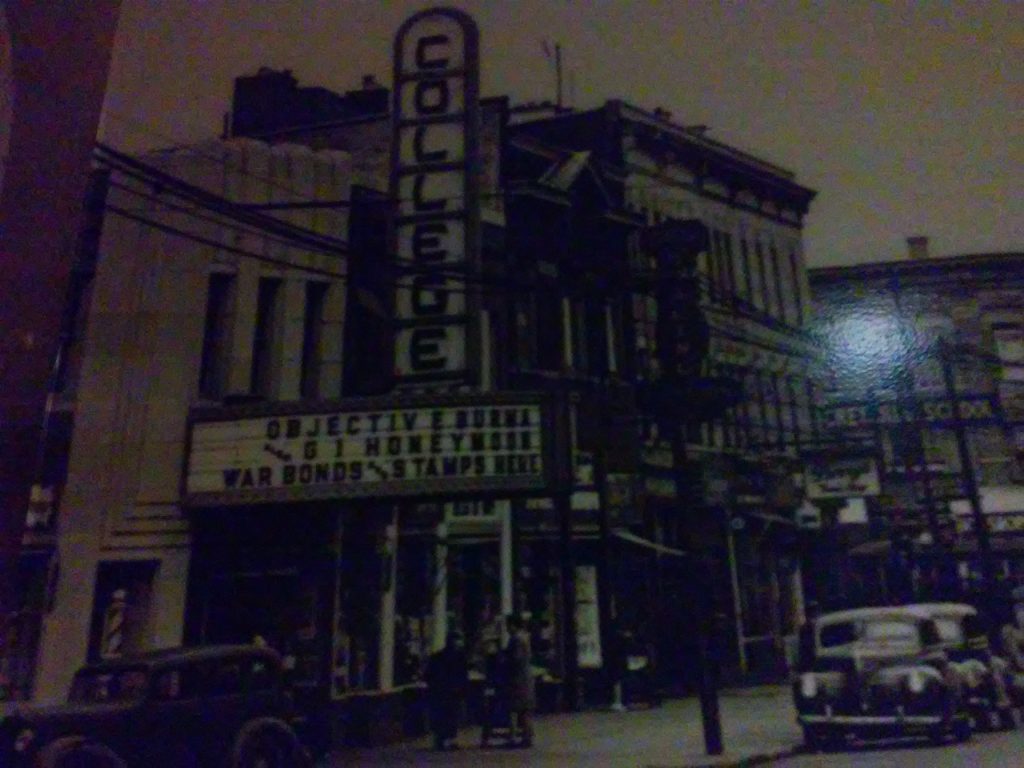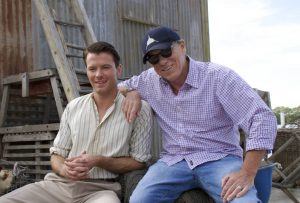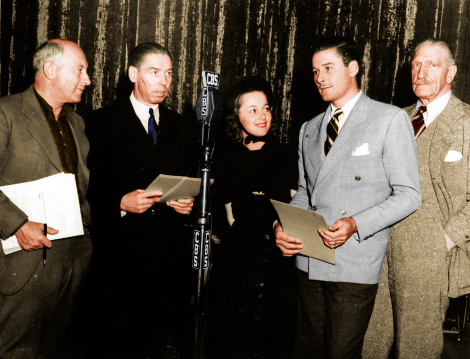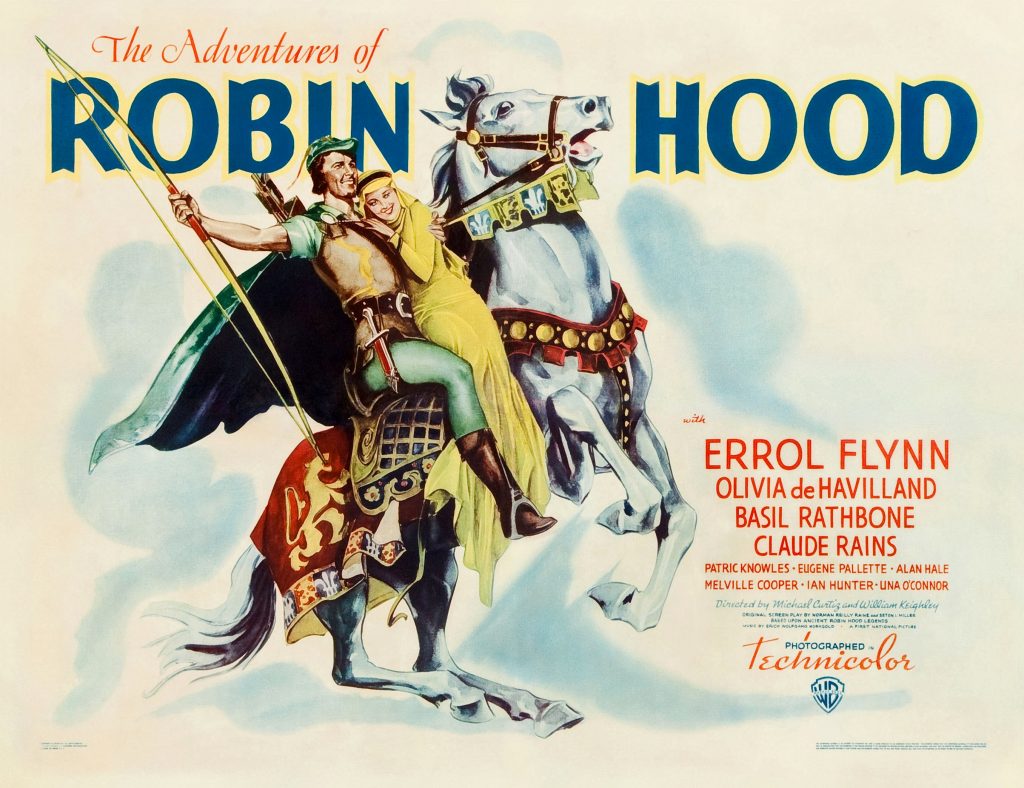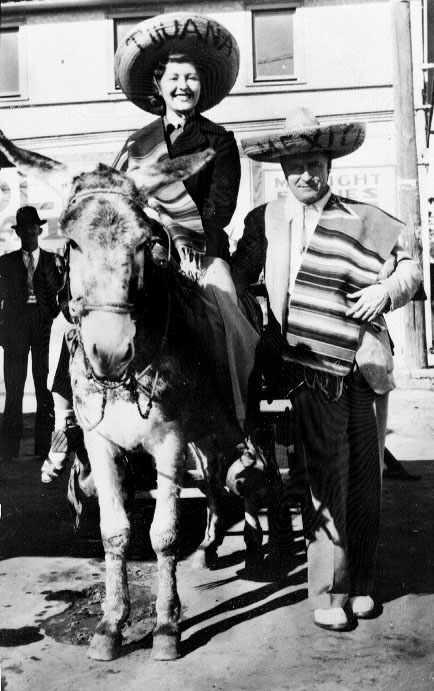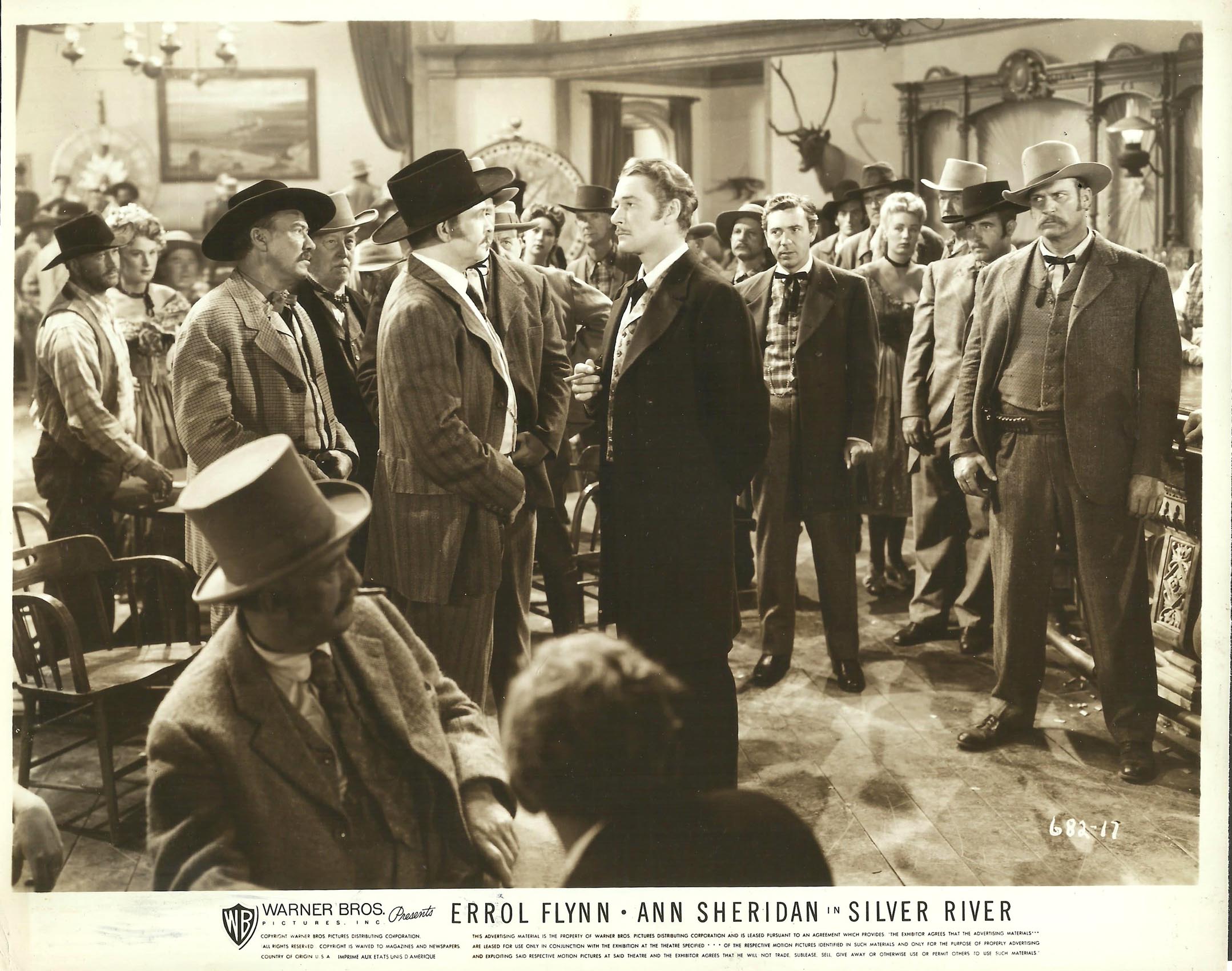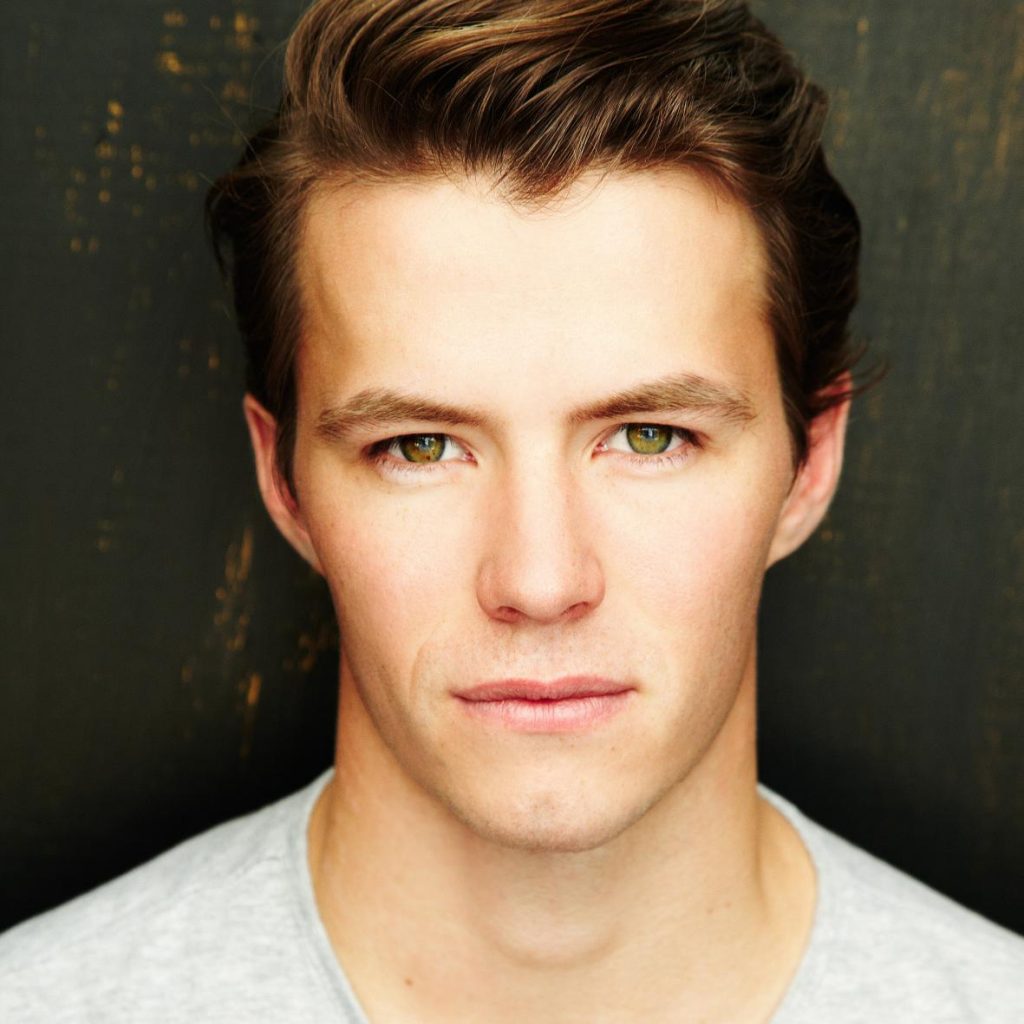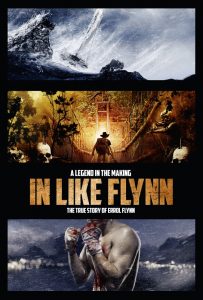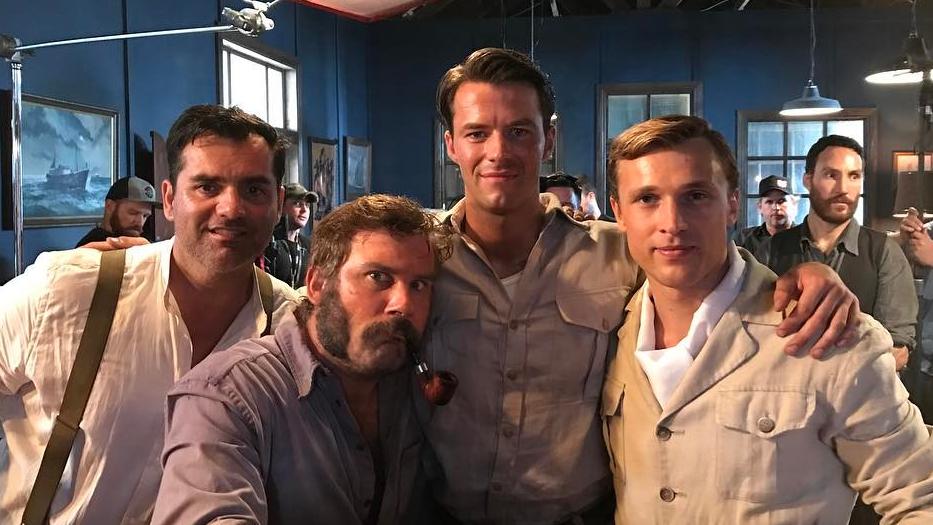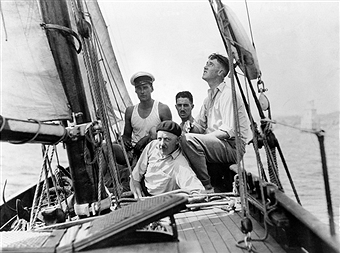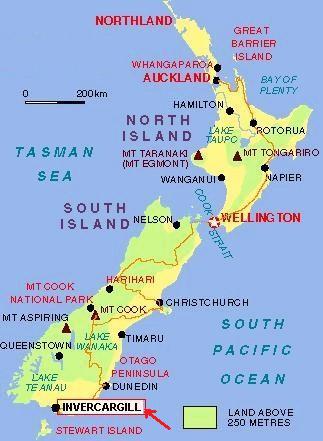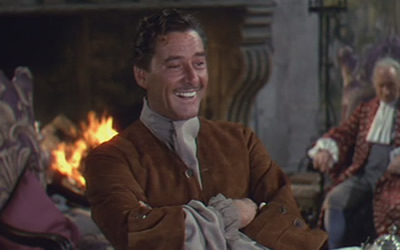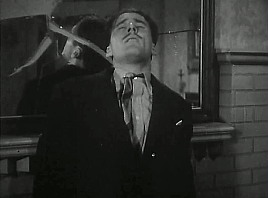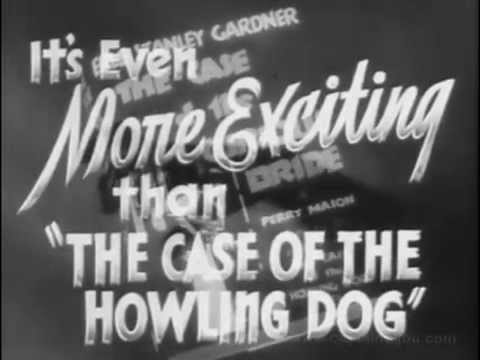From TROVE Digitised Newspapers, National Library of Australia
Brisbane Courier Mail 23/03/1932
Mr Charles Chauvel who produced “The Moth of Moonbi” and “Greenhide,” in Queensland some year ago, is to produce a series of films for Expeditionary Films Ltd., a Sydney company. Mr Chauvel, accompanied by his wife Elsa, and a camera staff, will travel far from the beaten track in search of cinema material. Adventure and romance are to predominate in the films, to be produced by this company.
Besides a feature film, Mr. Chauvel will make a series of historical and travel films. These will be recorded with German and French dialogue as well, as English. Mr Chauvel will commence production next month at the studio of Australasian Films, Bondi, Sydney.
Sydney Morning Herald 23/08/1932
MUTINY OF THE BOUNTY – Reconstructed for Films. Mr. Charles Chauvel returned to Sydney on
Saturday, after travelling 15,000 miles in little known parts of the Pacific Ocean, to make a film depicting the mutiny of the Bounty for Expeditionary Films, Ltd., an Australian company. Every effort has been made to produce the film historically, and present a faithful picture of the wanderings of the mutineers, before they reached Pitcairn Island, where they burned the Bounty,
And Lieutenant Bligh’s epic voyage of 4000 miles, in an open boat to Batavia, after he had been cast adrift with l8 loyal members of his crew. Mr. Chauvel followed the route of the Bounty and saw the remains of the ship lying in the clear water at Pitcairn Island. Native dances were filmed at Tahiti, where the mutineers stayed. Natives had to be specially chosen, as knowledge of primitive dances Is rapidly dying out.
Members of the party had an unpleasant experience at Pitcairn Island. They were Inspecting the coast in an open boat, when the engine failed, and they were blown out to sea. They managed to make repairs just before sunset, and made a dangerous return to the Island through the surf, which is always heavy.
Mr. Chauvel said that his company believed that Australian history was too much neglected, and attempts would be made to fill in the gaps. Arrangements have been made for copies of the film to be prepared with Spanish and German comment.
Sydney Morning Herald 15/03/1933
EXPEDITIONARY FILMS LTD. “BOUNTY” PICTURE LAUNCHED !!
To-day, at the Prince Edward Theatre, the film, “In the Wake of the Bounty,” which Mr. Charles Chauvel produced recently, with Tahiti and Pitcairn Islands as the principal backgrounds, will be given its first public screenings.
At the Australia Hotel yesterday, the directors of Expeditionary Films Ltd., under whose auspices Mr. Chauvel has made the film, entertained members of the Press and the motion picture Industry at luncheon.
Mr. S. Utz (Chairman of Expeditionary Films, Ltd.) presided. COL. M. P. Bruxner, who is a member of the company, outlined some of the difficulties which Mr. Chauvel had had to face In making the film; difficulties of transport; difficulties of organisation; and, finally, difficulties of censorship. The members of the company, being amateurs in the film business, had been amazed, and then appalled, at the amount of obstinacy and pugnacity which had to be displayed, before a film finally reached its public.
Mr. C. Brunsdon Fletcher spoke of the essential soundness and solidarity of the British Empire, in a world where every other nation was reeling beneath the shock of disaster (the depression). After all, it was human character, as expressed in national outlook, which remained the predominating factor. The producers of this film had done something decisive and valuable to make their country known elsewhere.
Mr. Hec C. MacIntyre (Managing Director of Universal Films – Aust) said that his Company considered it was only doing Its duty in trying to establish Australian films abroad. The launching of the Australian product In England, was no easy matter, either. The English exhibitor was conservative. He preferred to concentrate on English and American productions. Some of the earlier Australian films had been extraordinarily difficult to market. In Mr. Chauvel’s picture, however, he was confident that he had something to appeal to the tastes of the whole world.
Mr. H. Saxton (Secretary of Expeditionary Films) also spoke.
The West Australian 1 December, 1933
IN THE WAKE OFfHE BOUNTY New Australian Production.
Travelogues and dramas have drenched the screen- with the- spray of South Sea beaches until the film-goer imagines that he knows every angle from which a palm can be photographed. Then an Australian, Mr. Charles Chauvel,. makes ‘In the Wake of the Bounty,’ and presents the Pacific under a strange and cloudy beauty, such as has not been filmed. Mr. Chauvel, however, is more concerned with the savage languor of the tropics; he masses the brilliance of wild dances and flowers to show the pathetic contrast between the islands, which link that famous mutiny, Tahiti and Pitcairn, writes the Film Editor of the Sydney ‘Sun.’
Thus that first part of the. film is a glamorous reconstruction of history, with young Errol Flynn playing the part of Fletcher Christian – Mayne Lynton that of Bligh, and Victor Gouriet that of the blind fiddler, who tells the tale. The scenes aboard ship are effectively done; then, by filming the journey made down the
Pacific by the Chauvels themselves, Pitcairn comes into view and the title of the picture falls into its proper pace.
The latter sequences of the film admirably bear out the intention of the producers (Expeditionary Films, Ltd.) to chart the unknown tracts of the world. Pitcairn, of which the serious and religious people, appalling surf and precipices, prim houses and vegetable patches, are shown in absorbing detail, is one of those places which, as the steamer route moves farther out, will be less frequently visited.
Drama as well as travel has been caught by the film; human romances, swift tragedies, interludes as exciting as any fiction, all enthral the audience.
‘In the Wake of. the Bounty’ will be shown at the Theatre Royal in December, with ‘Leave it to Me’ (Gene Gerrard).
“In the wake of the Bounty” 1933 (24)
Australian Screen Site
Errol Flynn

As a cast member: Errol Flynn as Fletcher Christian 1933
In the Wake of the Bounty (1933)
This list shows all the titles currently on australianscreen , that include Errol Flynn in a principal role. It is not a comprehensive screen-o-graphy.
Singleton Argus 30/01/1933
NEW SOUTH SEAS FILM – CENSOR OBJECTS TO DANCE SCENES.
– SUPERVISED BY CLERGYMAN.
The South Seas film “In the Wake of the Bounty,” which the Commonwealth Censor (Mr Creswell O’Reilly) insists must be submitted for certain cuts, will be placed before the Censorship Appeal Board by the’ producer, Mr Charles Chauvel who said that the dance scenes to which Mr. O;Reilly had objected, had been supervised in the making, by a Methodist clergyman.
Sydney Morning Herald 11/02/1933
Top of Form
THE “BOUNTY” FILM. Appeal to Minister for Customs.
Mr. Charles Chauvel, who directed “In the Wake of the Bounty,” staled last night that the Censorship Appeal Board had considered the film, and announced its decision. When the sections of the picture photographed in Tahiti came before the Commonwealth Film Censor (Mr. O’Reilly) recently. ? he ordered three excisions before the film could be publicly screened within Australia. He also ordered that a cut should be made In the section photographed within the Commonwealth, before the completed film could be exported lo other countries. The Appeal Board passed every part of the production except
one set of incidents which relate to a native dance.
Mr. Chauvel declares that he and his Board ol Directors intend to carry their case from the Appeal Board to the Minister for Customs. They feel, he says, that their film has been unfairly chosen for attack, while foreign productions embodying the same type of incident, have been allowed admission to this country, without comment.
“If the Minister fails to reverse the decision of the Appeal Board”, he goes on, “In the Wake of the Bounty” will not be screened in Australia. Its’ owners will simply send it abroad, and concentrate on the oversea market The scenes of the native dance are the pivot of the whole production. If they are deleted, the film will be spoilt.”
National Screen Archives
Title No: 496
Title: IN THE WAKE OF THE BOUNTY : ORIGINAL RELEASE. Country of Origin: Australia
Production Date: 1932 Media: Film
Release Date: 15 March 1933 Duration: 01:04:00
Produced as: Feature Film Category: DramaCast: Marie Rosenfeld, Errol Flynn, Mayne Linton
Cinematographer/Director: Tasman Higgins
Director: Charles Chauvel
Company: Expeditionary Films |
Summary: Retells the story of the mutiny led by Fletcher Christian in 1789 against William Bligh, depicting the fate of the mutineers on Tahiti and Pitcairn. — General notes: Shot on location and in Sydney. The wreckage in the film portrayed as that of ‘The Bounty’ is in fact that of ‘The Cornwallis’, which was wrecked in 1875. — Source: Queensland Maritime Museum.
In 1935, M.G.M. bought American rights to the film and re-edited it to form two short travelogues, ‘Pitcairn Island Today’ (1935) and ‘Primitive Pitcairn’ (1936). These were used as promotional aids for the studio’s own production of ‘Mutiny on the Bounty’.
Source: Australian Film 1900-1977, Andrew Pike and Ross Cooper. |
— Isabel Australis
